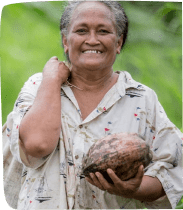Oxfam has published a new briefing paper: “From Private Profit to Public Power: Financing Development, Not Oligarchy”
Wealthy governments are making the largest cuts to life-saving development aid since aid records began in 1960. Oxfam analysis finds that G7 countries alone, who account for around three-quarters of all official aid, are cutting aid by 28% for 2026 compared to 2024. Whilst critical aid is cut, the debt crisis is bankrupting governments – 60% of low-income countries are at the edge of a debt crisis – with the poorest countries paying out far more to repay their rich creditors than they are able to spend on classrooms or clinics. Only 16% of the targets for the Global Goals are on track for 2030.
Oxfam’s new analysis examines the failures of a private investor-focused approach to funding development. A decade-long effort by major development actors to recast their mission as one of supporting powerful Global North financial actors has led in fact to a host of harms and at the same time only mobilized paltry sums. The analysis also looks at the role of private creditors, who now outpace bilateral lenders by five times and account for more than half the debt owed by low- and middle-income countries, in exacerbating the debt crisis with their refusal to negotiate and their punitive terms.
Read report here.





